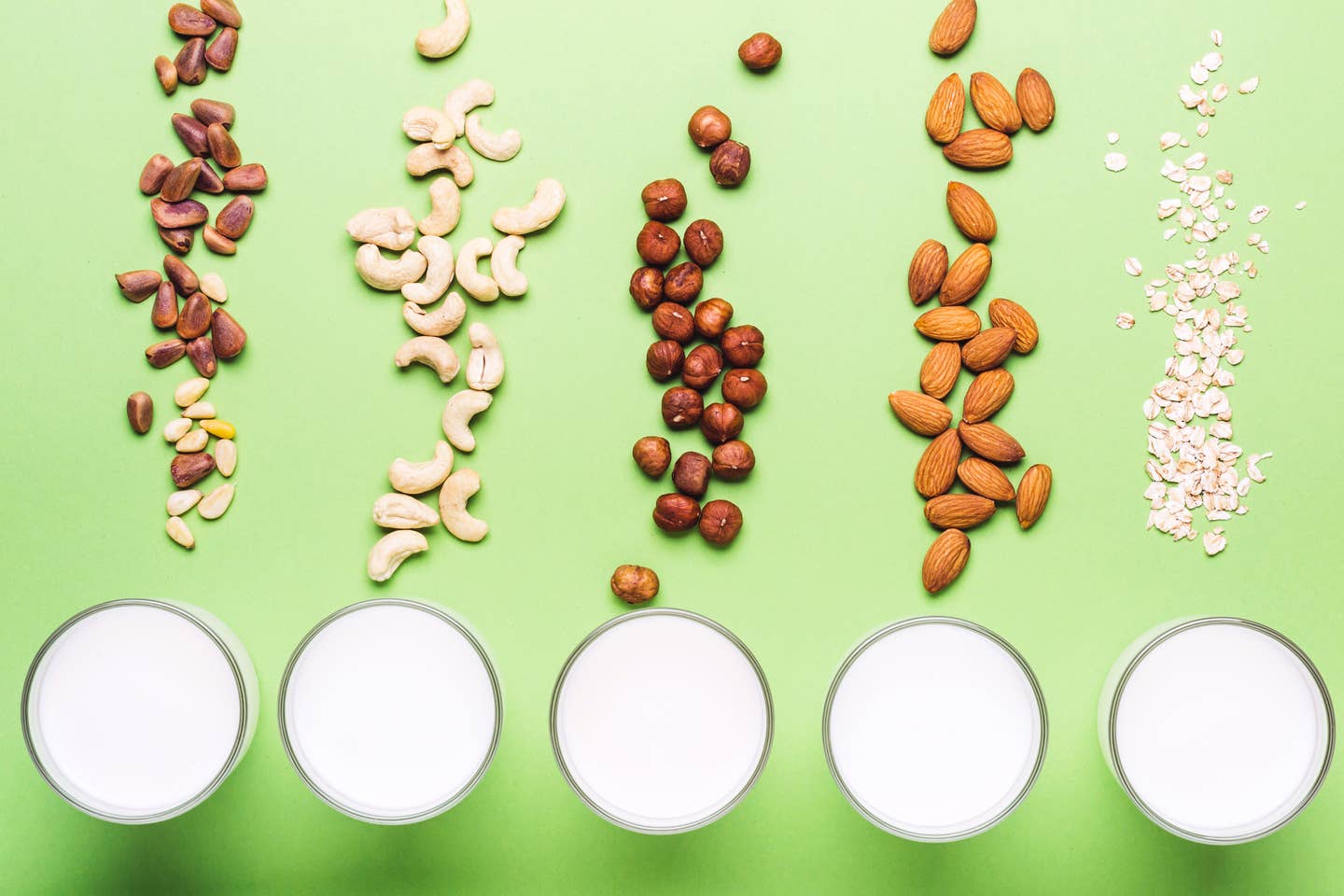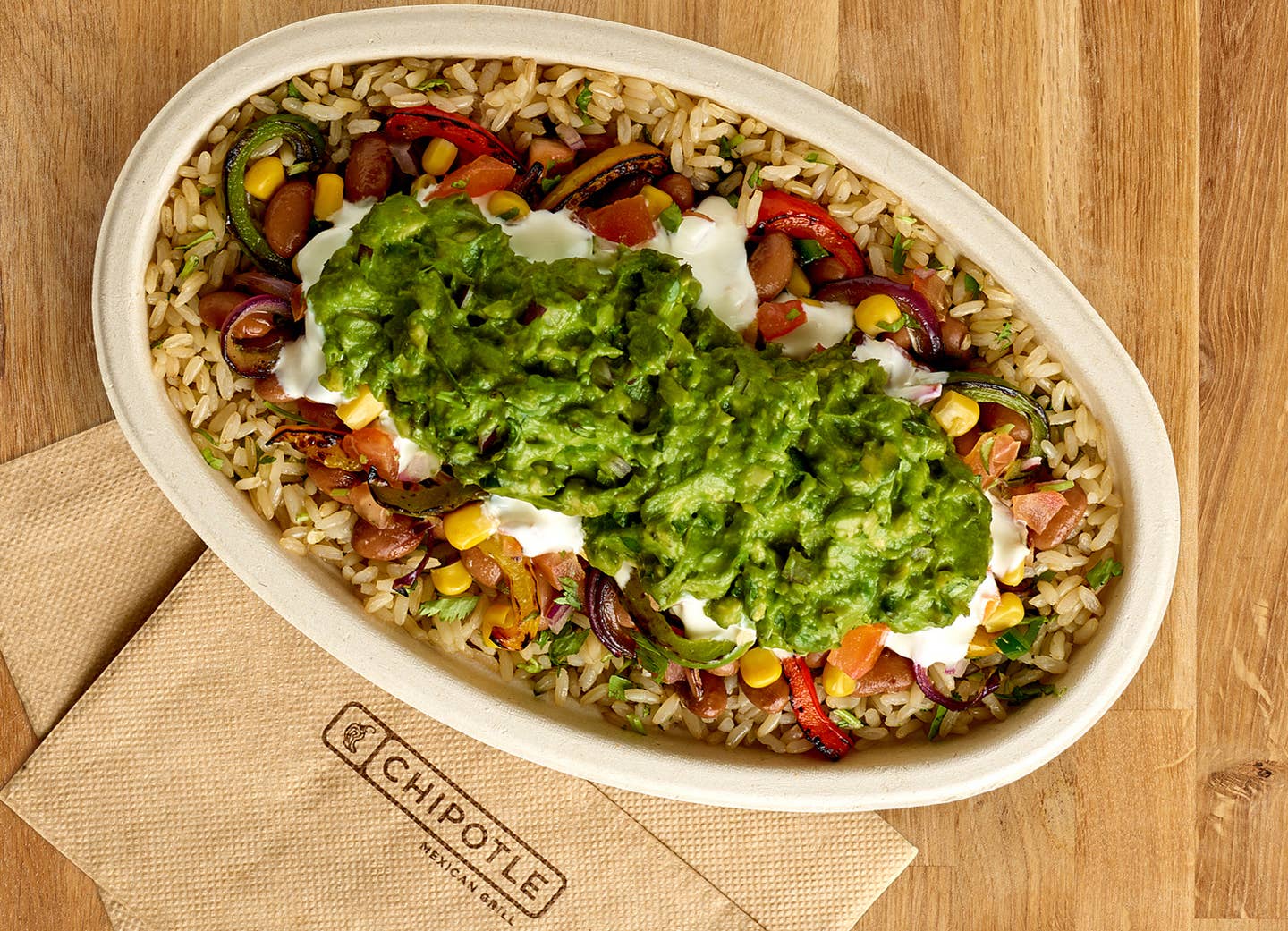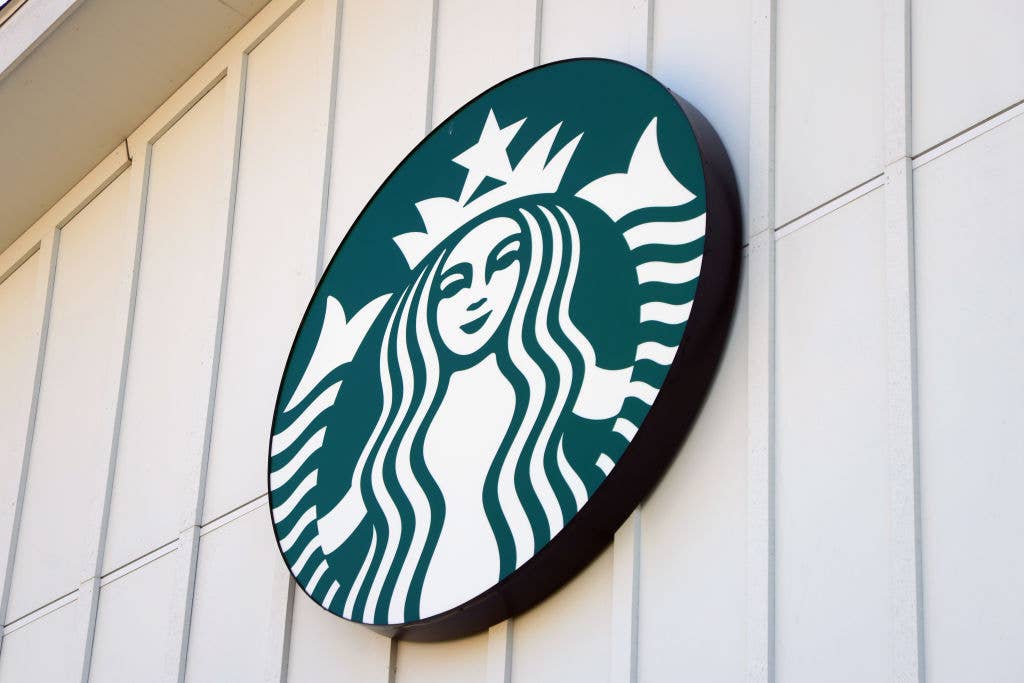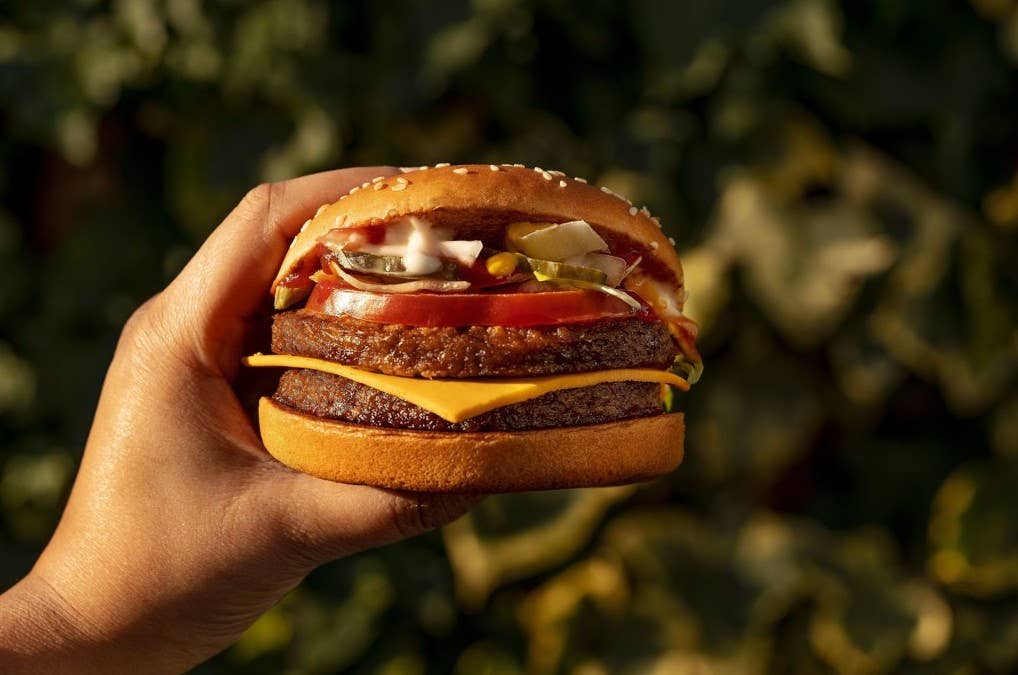
Dairy Is Terrible for the Planet. Almonds Need Gallons of Water. What Milk Should We Drink?
So, what is a climate-conscious consumer to do when it comes to choosing plant-based milk that is better for you and the planet? We know that raising farm animals to create dairy impacts the environment (greenhouse gases, fossil fuel for equipment, copious amounts of water), not to mention the belching cow that emits methane all day long (not to get down on the cow). A story in The Guardian examines which is worse: The milk made from dairy, the ones from nuts or the ones made from seeds.
First, know that any non-dairy milk is better than cow's milk when it comes to your health and the planet. A 2018 University of Oxford study found that ordinary glass of dairy milk produces three times the carbon emissions as its plant-based alternative. It takes into account every factor from the land required to grow animal feed, all the way to the methane emissions that the cows belch. Based on interviews with experts, here is the rundown on how those milks stack up:
Coconut Milk: The romantic desert island food with a dark side
Coconut sounds like a vacation drink: It looks like something a caveman (or woman) would have loved. Hearty, romantic, with a beautiful tree to call home! But the story is nothing short of sweatshop conditions, in countries with poor populations where pickers get paid less than a dollar a day. There is now so much pressure to meet global demand so workers take shortcuts and the rainforest gets cut down in the process. “Coconut is an absolute tragedy and it makes me really sad,” says Isaac Emery, a food sustainability consultant. So, cooking with it may be a luxury, but people were put through squalor and difficult conditions to bring that to your kitchen counter.
According to an investigation by The New York Times, between 2007 to 2014 rainforests in Indonesia were clearcut at the rate of three acres per minute to make way for coconut palm trees. To avoid supporting unsustainable practices, choose coconut products that are certified in Fair Trade.
Almond Milk: The bees pay the price for our love of almonds. So does water.
Almond trees don't require that much space to grow, but they do soak up the water. The vast majority of almonds you eat or drink are grown in California’s Central Valley. In fact, they are the largest specialty crop in the US. According to The Guardian, their trees would cover a region the size of Delaware.
Almonds require more water than any other dairy alternative, consuming 130 pints of water to produce a single glass of almond milk, according to Oxford.
What do bees have to do with it? They have to pollinate the trees! As the almond industry grows, so does the bees' workload. Nearly 70% of commercial bees in the US are drafted every spring to pollinate almonds. Last year, it's estimated that one-third of the bees died from the pressures of this imbalance of growth.
Rice Milk: Tiny little water-sponges, in a bad way
Rice milk is known to be a cheap alternative to its nut milk cousins. But it comes with a tradeoff since rice offers little in the way of nutrition or environmental benefits, compared with other vegan milk. Rice soaks up water, and it also produces more greenhouse gas emissions than any other plant milk, the Oxford study found. Plus, the swampy paddies also release methane into the air, and allow bacteria to grow and then get released into the atmosphere. Rice is one of the worst polluters when it comes to water.
Hazelnut Milk: A rising star from the northwest
The harmless hazelnut, a chocolate lovers' dream, is coming on strong. Like all nuts, hazelnuts grow on trees and all trees—all plants, in fact—use the energy of sunlight. They take carbon dioxide from the air and water from the ground and they release oxygen back into the atmosphere (photosynthesis!). So, hazelnuts are environmentally superior to almonds since they get pollinated by wind rather than bees. Hazelnuts come from moist environments, like the Pacific Northwest, where water is more plentiful than arid California.
Hemp and Flax Milk: Let's hear it for the little guys.
Hemp and flax haven't enjoyed the star turn of oat and almond, but they deserve more credit than they're given for needing little water, creating major protein-packed milk and a high fiber count. They're considered “niche crops” since they are grown in relatively small numbers. Seeds, in general, take less to grow than nuts and deliver healthy fats, minerals and nutrients ounce per ounce.
Soy Milk: After being avoided, enjoying a comeback
Soy wins for sustainability and also its protein content. And after being misunderstood as a plant-based phytoestrogen that women avoided because they worried it could promote the risk of breast cancer, the latest studies show the reverse is true: That soy appears to have some protective value when eaten in moderation. Recent studies have instead found that a moderate amount of soy is healthy, and actually may keep hormones in check.
The primary environmental drawback to soy milk is that soybeans are grown in massive quantities around the world to feed livestock for meat and dairy production. Large swaths of rainforest in the Amazon have been burned to make way for soy farms. The workaround for this is to simply do a little research and read the carton to find soy milk that is made from organic soybeans grown in the US or Canada.
Oat Milk: The mighty grain is crushing it
When the latest Swedish invasion came to the states several years ago, in the form of Oatly, no one could have anticipated the love affair that was about to ensue. Oat milk is not only high in protein but tastes like the real thing. And growing oats is—at least as of now—relatively low-impact on the environment. Oats are healthy for you and the environment. And known as a low-input crop, which, when grown in rotation, creates crop diversity and reduce soil erosion and help lower the risk of plant diseases. The mighty oat is actually a hero grain.
Of course, as sales of oat milk in the US have more grown from $4.4m in 2017 to $29m in 2019, placing it first ahead of almond milk as the fastest-growing non-dairy milk, oats could one day become more of a commodity. But for now, there are enough oats to keep us on Oatly for years to come.
Roundup Alert: Oats are usually grown in mass-produced industrial aggri-operations, where farmers spray them with the Monstanto glyphosate-based herbicide Roundup before harvesting. Roundup, as you are probably aware, has been linked to cancer in some high-profile cases where jurors awarded huge sums to plaintiffs. Still, farmers know the famous cases, each litigated in the public eye, but they continue to use the chemical for its effectiveness. Bayer, which bought Montsanto in 2018 is contesting that the active ingredient of Roundup—glyphosate—does not cause cancer in humans.
So how much of this glyphosate really is in that bowl of oatmeal or your oat milk latte? A recent study by the Environmental Working Group tested for glyphosate and found that it was in all the foods it tested containing conventionally grown oats—and even in one-third of products made with organic oats. However, the popular Oatly brand oat milk company maintains that its oats are certified glyphosate-free.
So what are you ordering in your coffee?
Whether it’s hemp, almond, soy or oat, you should drink the plant milk that you like best. For The Beet's own taste test, check out our product reviews and add your own rating to the Beet Meter for the milk you like the best. As for the environment, as long as you're staying away from cow's milk, you're ahead of the game.
More From The Beet






